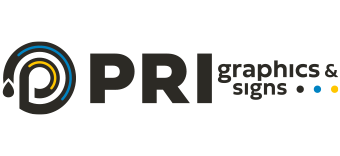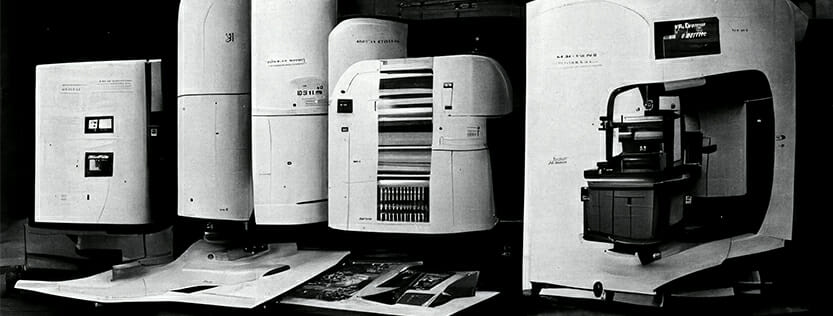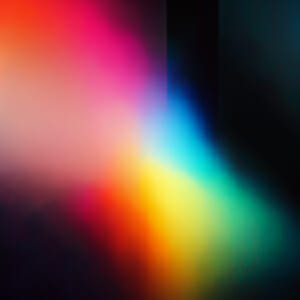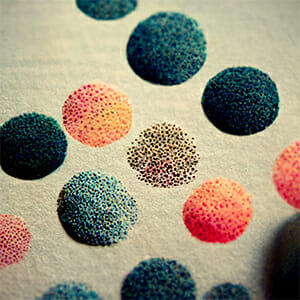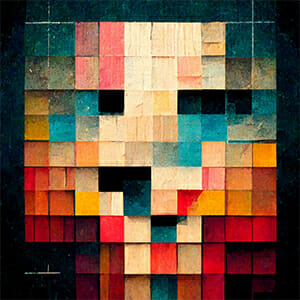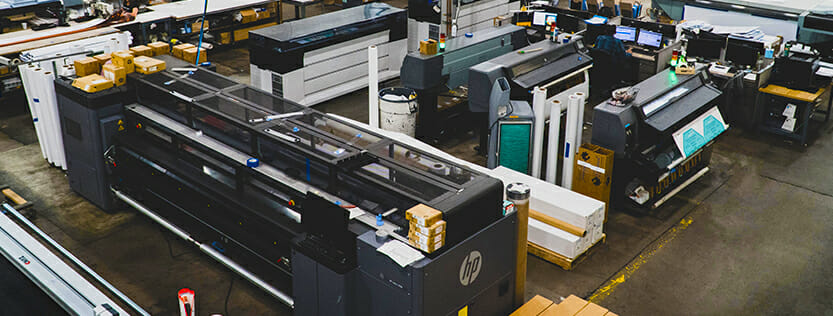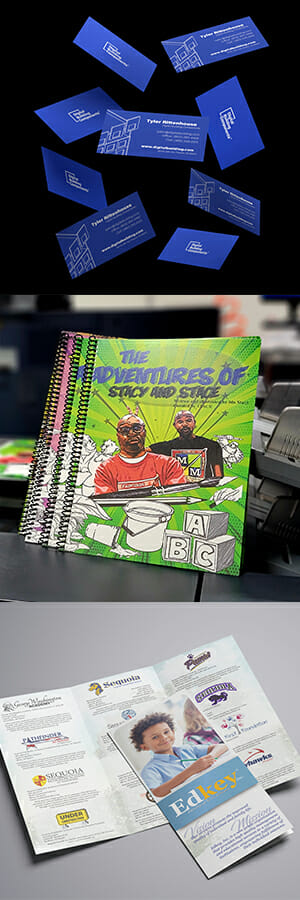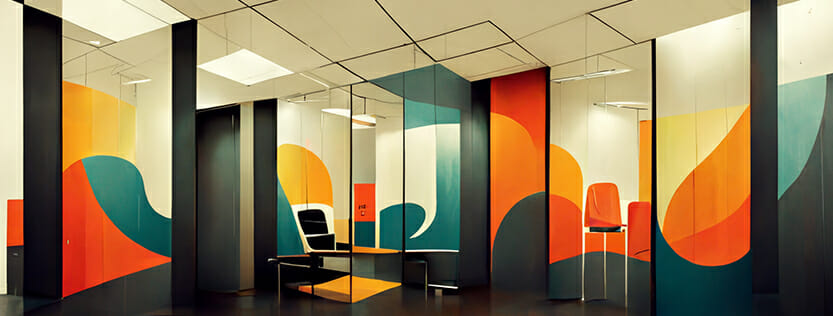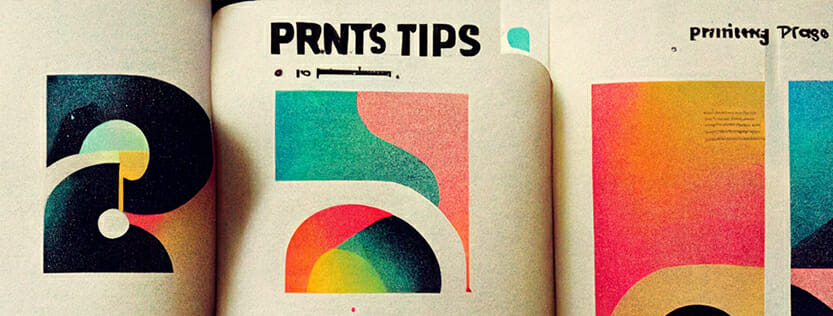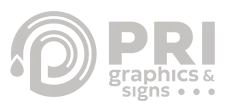Print Industry Acronyms and Terms to Know
Read time: 7 minutes | Author: PRI Graphics | Posted: August 30th, 2022
Why Understanding Print Terminology is Important
The print industry terms can come across like its own language at times. Just like any other, it has it own set of acronyms and verbiage that helps in the communication and understanding of one another. Its terminology and acronyms are sometimes specific to print itself, but at other times can be seen or used within others such as design, marketing, or even tech.
It’s important to understand these terms, especially if you are within the industry itself or if you or your company work with commercial printers and have projects done either daily or even every now and then. This article is meant to assist in that understanding. Our hopes are to try to explain some of the more popular terms used within the industry.
If you are interested in having printing done or have any other questions, feel free to contact our team! You can call locally at 602-393-3131 or toll-free at 1-877-409-8889. You can also visit our contact page to reach out directly via email.
Color and Resolution
To start off, the first major print terms to begin to understand would be the different color and resolution types.
CMYK Color
The mixing of CMYK colors is a “SUBTRACTIVE PROCESS” that gives more accurate results than RGB. CMYK images are created by combining actual ink colors during the color printing process. In the print world, the color process starts with “white.” Each layer of the 4 ink colors then serves to “reduce” the initial brightness to vary the hues and create the desired image.
This color mode will be most commonly used for print.
RGB Color
These primary colors are best for digital work. Generally used for computer monitors, digital cameras, smartphones, scanners, TV screens, etc. RGB color mixing is an “ADDITIVE PROCESS”. The digital world starts from blackness and adds varying intensities of red, green, and blue light. To then create the digital color image we see on the screen.
While RGB is more commonly used for digital design and assets.
When it comes to resolution, especially in design and print, the print industry terms you will want to focus on are PPI or DPI.
DPI (Dots Per Inch)
Dots per inch is a measure of printing quality. Many printers work by producing tiny dots per square inch to create an image. The more dots equals greater accuracy and detail. Commonly, 300 and 600 DPI are the standards for most print jobs. It all is depending on the type of paper and printer you use.
You will see that DPI is most commonly used by a printer.
PPI (Pixels Per Inch)
PPI measures the display resolution, or pixel density, of a computer monitor or screen. The measure is also used to indicate the resolution of a digital image, as well as the resolution capacity of a camera or scanner capturing an image. Higher the PPI, the higher the quality of the image. You need to be aware that most images with a PPI range between 150-400 will be more than appropriate for printing, in most cases.
While PPI is more commonly seen and utilized by a designer.
You may find this article interesting: RASTER VS VECTOR GRAPHICS
Materials and Substrates in Print
In commercial printing, a variety of materials and substrates are available. Depending on your need for either wide format printing or small format products will determine an option. Here is a short list of different types of materials or substrates categorized by wide or small format printing you will commonly see.
Wide Format Printing Materials
- Acrylic
Acrylic signage can be a versatile material for more aesthetic environments. Having options from clear or solid-colored acrylics that both can be printed on, allows for a variety of choices for your signage.
- ACM (Aluminum Composite Material)
ACM (aluminum composite material) or sometimes referred to as Dibond is another material with similar quality to an aluminum sign.
- Wood/MDO
Wooden signage or sometimes referred to as MDO (medium density overlay – plywood) can be a great option for outdoor permanent use, so long as the wood is treated for it.
- Coroplast
A brand name for corrugated plastic and a registered trademark of Coroplast, LLC, a member of the Inteplast Group of companies. Because of the success of this brand, it has become a generically used trade name and many people in North America today refer to all corrugated plastic as “coroplast”.
- Foamcore Board
Foamcore, foam board, or paper-faced foam board is a lightweight and easily cut material used for mounting photographic prints, as backing for picture framing, for making scale models, and in painting. It consists of a board of polystyrene foam clad with an outer facing of paper on either side, typically white clay-coated paper or brown kraft paper.
Small Format Printing Materials
- Text Weight Paper
Text weight paper refers to paper that’s thin, flexible, and lightweight. You may think of standard office printer paper or a book or magazine’s interior pages. Sometimes called book, bond, writing, ledger or offset paper, text weight paper can be coated or uncoated. A good example of use would be with marketing flyers and mailers or pamphlets and brochures.
- Cover Weight Paper
Cover weight paper refers to paper that’s thicker and sturdier than text weight paper. At its heaviest, cover stock weight can be similar to the material used to make cereal boxes or seen with invitations. Sometimes referred to as cardstock, Bristol, index, or tag paper, cover stock paperweights can be both coated and uncoated.
Commonly Seen Products
- Leaflets
Unlike flyers, printing leaflets generally involve more thought towards elegant design. Most of the time, leaflets cost a little more to print. They are usually printed in full color and on good quality printing paper, with the intention that the leaflets will be kept and read in more detail.
- Stationery
Stationery, in the print world, refers to a variety of office products. From business cards to envelopes and letterheads, these items are usually branded with the company logo or designed within the brand standards.
Print Setup and Other Terms in Print
The final stages of design, before sending your art to print, require a specific setup at times. You may need to add bleed to a flyer, or maybe ensure a spot color is labeled correctly. Here are a few more printing terms you may want to know when setting up your artwork in the final stages.
You can always check out our templates page to download print ready templates to assist with your setup.
- Spot Color
Spot color or solid color is any color generated by ink that is printed using a single run, whereas a process color is produced by printing a series of dots of different colors. For example, commercial printers use spot colors to produce white ink printing… usually seen as a solid cyan color in the design phase.
- Bleed
Almost all printers ask that projects include a bleed. The bleed helps the printer accurately prepare the file for printing so that the correct area is printed, the paper is cut to the proper size, and the color is reproduced accurately. Bleed is important because it creates a little wiggle room in the printing process.
- Die-Cut
The process involves the use of a tool (or die) to cut a specific shape out of a printed sheet. Presentation folders are a good example.
- C1S or C2S
Acronyms used for ‘Coated One Side’ and ‘Coated Two Sides’ paper stock. It’s a cover stock with a glossy finish on one side and uncoated on the other, usually between .008″ and 0.18″ in thickness.
- Ghost or Ghosting
On a printed image, another lighter image in the same print is called ghosting because of the lighter, ghostly finish. For example, dimensional signage will use a ghost to help with the placement of letters or shapes.
Final Tips on Print Industry Terms
When it comes to print terminology and acronyms it can seem overwhelming. Once you start to understand, at least the most commonly used terms, it starts to make sense. We always recommend working alongside a commercial printing partner such as PRI Graphics & Signs. These commercial printers will know all there is to know about printing and what’s needed for your projects. If you want to review more terms, you can always check out this link: Print Industry Glossary.
As a family-owned and operated commercial printer in Phoenix, Arizona for over 20 years, PRI Graphics & Signs takes great pride in ensuring that your final printed product is always produced with the highest quality and consistency to your needs and your budget.
If you still have questions or would like more information about print terminology or any other managed print services, please call Toll-Free 1-877-409-8889 or email PRI Graphics & Signs.
